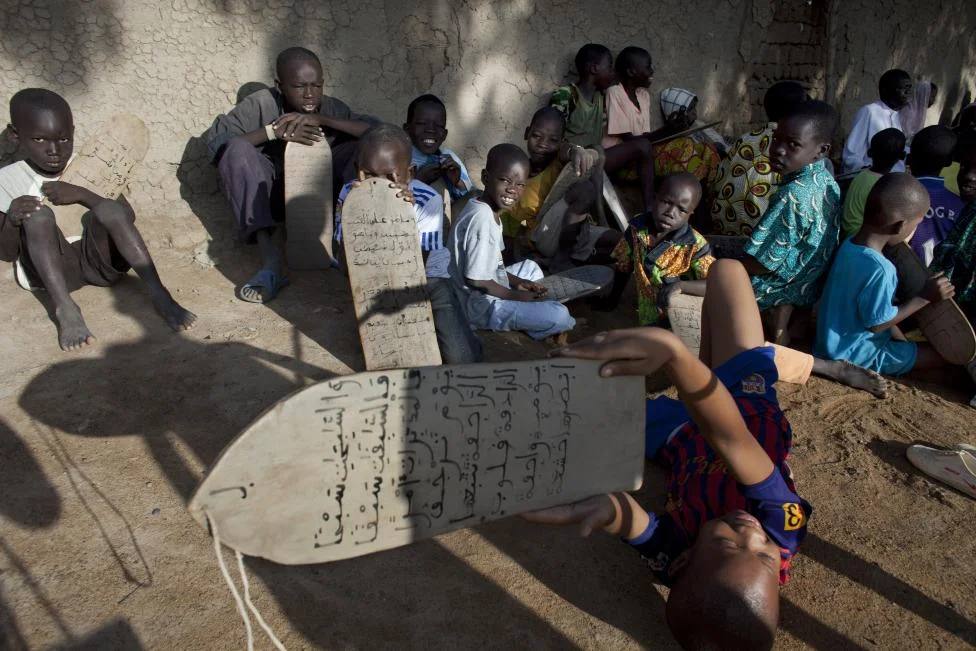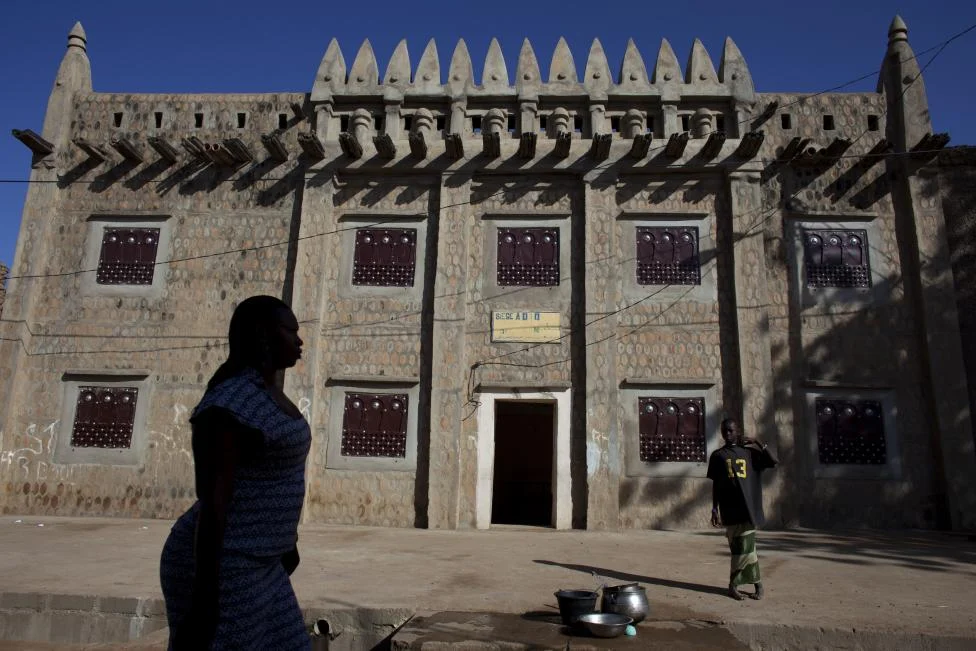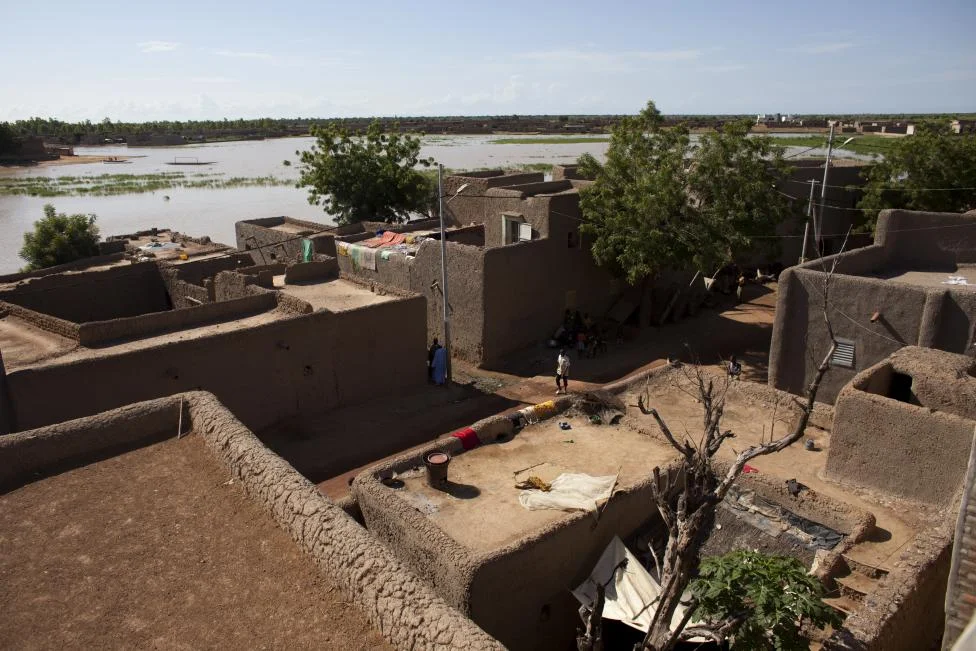A World Heritage site in central Mali that features elaborate pre-Islamic mud houses is in danger of deteriorating because it cannot be protected adequately in the face of insecurity, UNESCO said on Wednesday.

The Old Towns of Djenné includes four archeological sites with nearly 2,000 houses whose decorative facades have remained intact since the 3rd century B.C. The buildings are among the most famous in Mali, a country that also boasts the ancient town of Timbuktu.
The World Heritage Committee said insecurity was preventing measures to safeguard the site against the deterioration of construction materials, urbanization and erosion.
Mali faces a threat from Islamist militants, as well as volatile separatist politics in the north.

in front of the Grand Mosque of Djenne, Mali [Credit: Reuters/Joe Penney]
"The Malian government is coping with a lot of challenges," said Edmond Moukala, head of UNESCO World Heritage in Africa, adding concerns were raised when a team visiting the site this year found signs of deterioration.
"What is needed right now is to ensure that institutions are in place and receive financial support," he said.
A force led by French troops intervened in 2013 to drive back militants who had hijacked an ethnic Tuareg uprising and seized Timbuktu and other towns in the north.

[Credit: Reuters/Joe Penney]
In 2012, militants linked to al Qaeda destroyed ancient shrines and tombs in the World Heritage site at Timbuktu.
Violence flared this week as the army opened fire on protesters in the northern city of Gao who opposed an interim authority intended to maintain stability in the desert region.
Djenné, a market center and link in the trans-Saharan gold trade, were added to the World Heritage List in 1988.

[Credit: Reuters/Joe Penney]
Timbuktu and an ancient tomb in Gao have been on the list of sites in danger since 2012. The 49 properties on the list include archaeological sites in Syria, Iraq and Afghanistan.
Source: Reuters [July 14, 2016]